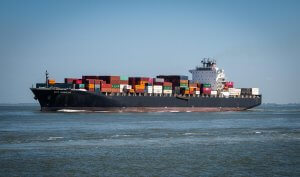Global container shipping profits took a sharp downturn in the second quarter of 2025, with carriers reporting a combined net income of $4.4 billion — a 56% drop from Q1’s $9.9 billion and nearly two-thirds lower than the $12 billion posted in the same quarter last year, according to maritime analyst John McCown.
This marks the industry’s third straight quarter of declining earnings, as the profit boom fueled by pandemic disruptions and the Red Sea crisis fades. McCown admitted his initial Q2 forecast of $5 billion was “too optimistic,” citing mounting U.S. tariff and trade measures as key drivers of the slowdown.
U.S. Trade Weakness Driving the Decline
U.S. trade lanes, which represent about one-third of global container miles, are being hit the hardest. Inbound container volumes to the U.S. fell 3.6% over the three months ending July, with the National Retail Federation projecting a deeper 5.6% full-year decline compared to 2024. McCown estimates this would require a steep 17.5% plunge in inbound volumes through the remainder of 2025 — almost entirely attributable to tariffs.
From Record Profits to Mounting Headwinds
The downturn comes after carriers reaped unprecedented gains: nearly $400 billion during the pandemic and another $50 billion amid the Red Sea crisis. While those disruptions honed capacity management strategies, today’s tariff-driven pressures appear more persistent.
McCown now forecasts Q3 profits will sink further to $1.9–$2.5 billion, far below the $26.4 billion posted in Q3 2024. The new U.S. Trade Representative fee plan, which takes effect in October and imposes charges on Chinese-built or Chinese-operated vessels, could intensify the strain — particularly on the Asia–West Coast trade lane, where COSCO maintains a dominant position.
Investment Continues Despite Market Strain
Despite weakening fundamentals, carriers are still taking delivery of new tonnage, much of it ordered before tariffs and new fees were introduced. Analysts suggest these investments highlight carriers’ improved discipline in managing fleet capacity, though the influx of vessels could further pressure profitability in a softening demand environment.
A Defining Period Ahead
“The next year or so is certain to be among the most eventful periods ever for the container shipping industry,” McCown concluded, framing the sector as a bellwether for broader U.S. and global economic trends.



